Men's magazines: an A to Z
Men's magazines, lads magazines, glamour magazines, pin-up magazines and top-shelf magazines covered alphabetically. This page addresses Man to Maxim, via Town – no less than five versions of Man About Town on three continents – and Man Junior. On other pages:Introduction
- 3D titles to Boys Toys
- Carnival to Cut
- Deluxe to Esquire
- Fable to Front
- The Gentleman's Magazine to The Humorist
- Ice to London Opinion
- Man to Maxim (this page)
- Mayfair to Monkey
- Nine to Playboy
- Razzle to Stuff
- T3 to Zoo Weekly
 The Man, based on reprints from Australia's Man for the UK |
Man (Australia) [closed]K.G. Murray Pub. Co., Sydney, 1936-1974Australian men's magazine based around pin-ups, cartoons, features and fiction. Man spun off several titles with similar formats, including The Man (British reprint); Pocket Man; Man (US reprint); Man Junior; and Man Senior. www.collectingbooksandmagazines.com/man.html |
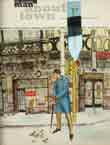 Man About Town Australia in 1968. A blue ribbon is stuck on the cover |
Man About Town (Aus) [closed]Pendle Publications, 77 Burwood Highway, Burwood, Victoria. September 1968-?Editor Raymond D. White covered fashion, motoring, wines, gourmet, theatre, finance and Australiana in Man About Town. The first issue carried a promotional blue ribbon stuck to the cover. |
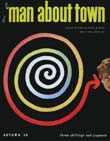 Man
About Town in 1958 in the UK under John Taylor. The cover was by Maurice Rickards, founder of the Ephemera Society |
Man About Town (1950-60s) [closed]Tailor & Cutter, 1952-1968 (as Town) |
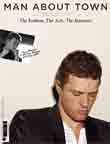 Man
About Town launch issue cover |
Man About Town (2007-)Fashion, twice a year, Autumn 2007- |
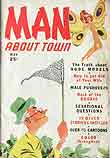 Man
About Town in New York in 1939 as a pocket format title |
Man About Town (US 1939) [closed]Man About Town Publishing Co., 149 Madison Ave, NY. May 1939-?No advertising in the first issue of this pocket format title, though extensive use of spot colour inside. |
.jpg) Man
About Town in 1958 |
Man About Town (US 1958) [closed]September 1958-? |
 Man
and His Clothes |
Man and His Clothes [closed]1931? |
 Man Junior -
a Man spin-off |
Man Junior (Australia) [closed]Man Junior Magazine Pty, Sydney; printed by Kenmure Press, Nth Lidcombe, NSW. Mid-1950s-?Stories, pin-ups and cartoon series in this Australian monthly. Spot colour used to liven up illustrations. The editor was Loris A. Laidlawand the publisher: Ken G. Murray. see Man |
 Man on the Town was a British reprint of a US title |
Man on the Town (UK) [closed]Arnold Book Co., 2 Lower James St, London W1. 1958-?Man on the Town was a reprint of the US title Man About Town (in the UK, the Tailor & Cutter spin-off with the same name was already established). Like the US edition, Man on the Town carried no advertising. It cost 3/6 for 68 pages. |
Man Senior [closed]see Man |
 First Maxim (May 1995) under editor Gill Hudson  Maxim with a CD-Rom on the front cover of issue 4  March 2000 UK Maxim  Last issue of Maxim in the UK – June 2009 – under editor Ben Raworth  In April 2000, Maxim came to South Africa. This cover of model Caprice in bondage tape had been used on the June 1999 cover in the UK to celebrate the 50th issue of the magazine  Maximal, the French Maxim (September 2001) 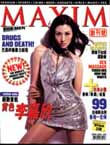 Maxim Chinese edition in 2005 |
Maxim (UK)Dennis, May 1995-June 2009Competition for Loaded and FHM in the lads magazine sector with Gill Hudson as launch editor. Dennis made its original fortune in computer magazines, so Maxim had the expertise to mount a CD-Rom on its cover in August 1995, its fourth issue. However, the title was never able to challenge FHM as market leader and generally came in third in the UK sales stakes for lads magazines. Dennis sold Maxim and most of its other titles outside the UK to Alpha Media in the US in August 2007. It carried on publishing the title in the UK and the website under licence. When UK Maxim closed in 2009, Dennis was able to claim it was 'the best-selling men's lifestyle magazine in the world' because of the success of its many international editions. The website (maxim.co.uk), launched in 1999, continues and Dennis imports the US edition to the UK.It was a different story from 1997 in the US. International expansion continued apace after the astounding success of the US edition. In October 2001, the French Maximal was launched by Hachettte Filipacchi under licence from Dennis. In April 2004, Maxim launched two Chinese editions (in Mandarin and Cantonese) – its 22nd and 23rd international editions. In all, Maxim claimed a readership of 17 million and sales of nearly four million copies a month. The Chinese editions are published jointly with the South China Morning Post. |
 Maxim hit US news-stands in 1997 to condemnation from the old guard |
Maxim (US)Dennis, 1997- |



